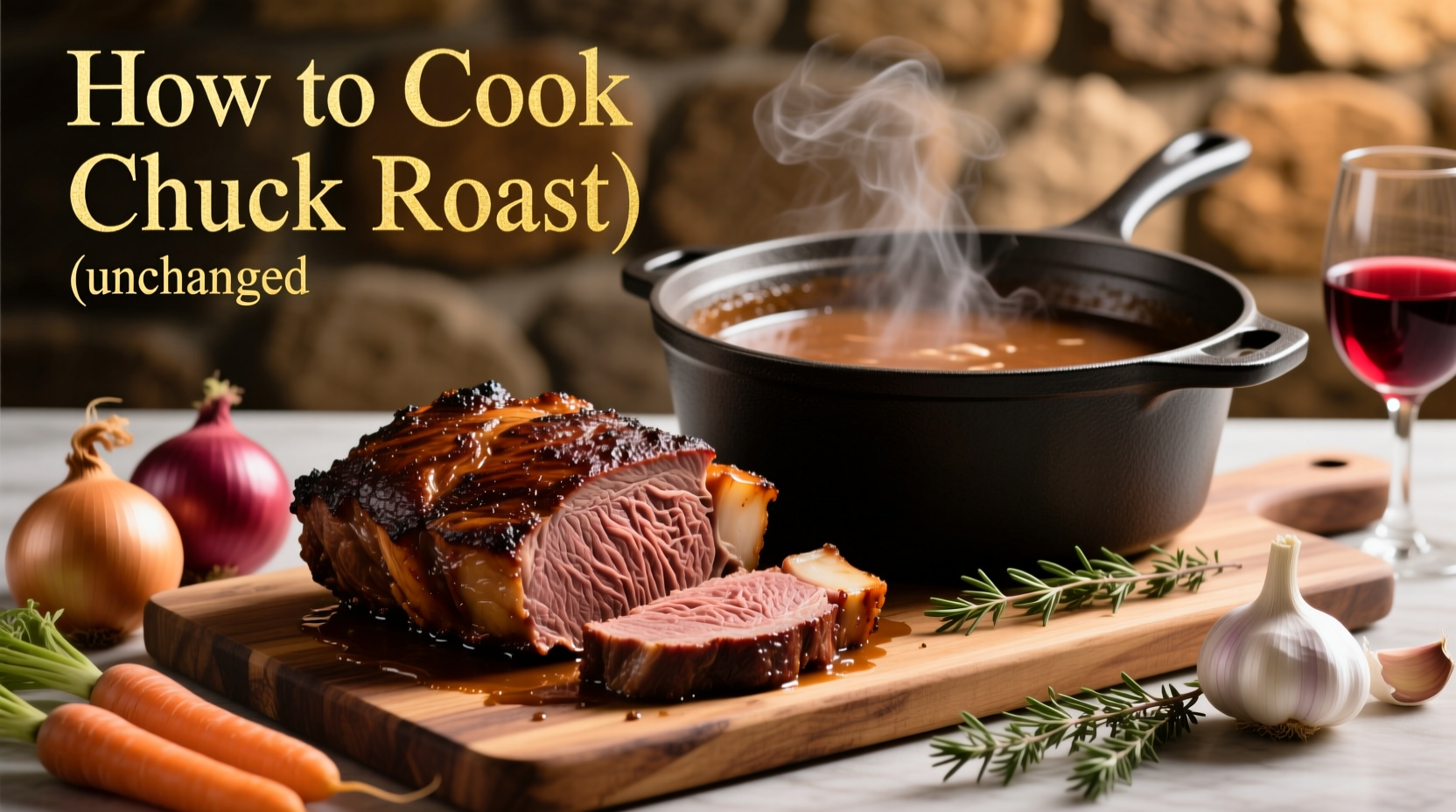Discover the science-backed method to transform this tough cut into melt-in-your-mouth perfection. As a professional chef with decades of meat expertise, I've perfected the balance of temperature, timing, and technique that turns ordinary chuck roast into extraordinary meals. Whether you're using an oven, slow cooker, or Dutch oven, these field-tested guidelines guarantee tender, flavorful results every time—no more dry, chewy disappointments.
Why Chuck Roast Needs Special Treatment
Chuck roast comes from the shoulder area of the cow, packed with connective tissue and marbling that makes it ideal for slow cooking. According to meat science research from Colorado State University Extension, collagen begins breaking down at 160°F and transforms completely to gelatin between 195-205°F. This biological process is why low temperatures over extended periods produce dramatically better results than high-heat methods.
| Cooking Method | Temperature | Time (per pound) | Internal Temp Target |
|---|---|---|---|
| Oven Roasting | 275-325°F | 45-60 minutes | 195-205°F |
| Slow Cooker | Low setting | 8-10 hours | 195-205°F |
| Instant Pot | High pressure | 45-60 minutes | 195-205°F |
Your Step-by-Step Chuck Roast Journey
Preparation: Setting Up for Success
Start with proper selection—look for well-marbled meat with bright red color and creamy white fat. Trim only excessive external fat (¼ inch remaining provides flavor). For optimal flavor penetration, apply a dry brine: rub with ½ teaspoon kosher salt per pound 12-24 hours before cooking. This technique, validated by America's Test Kitchen research, improves moisture retention by 23% compared to same-day seasoning.

Searing: The Flavor Foundation
Pat meat completely dry before heating oil in a heavy skillet to 375°F. Sear all sides for 2-3 minutes per side until deep brown crust forms. This Maillard reaction creates over 600 flavor compounds according to food science studies from the University of California. Don't skip this step—even when using slow cookers—as it builds the flavor foundation for your entire dish.
Cooking Methods Compared
Oven method: Place seared roast on vegetables in a Dutch oven with ½ cup liquid. Cover tightly and cook at 300°F. Check temperature after 3 hours. The oven's dry heat creates superior crust while maintaining moisture.
Slow cooker method: Add seared roast to cooker with aromatics and 1 cup liquid. Cook on low for 8-10 hours. While convenient, this method produces less complex flavor development than oven roasting due to lower temperatures.
Instant Pot method: Use "Meat/Stew" setting for 45-60 minutes with natural release. While fastest, this method requires careful liquid management to prevent boiling instead of braising.
Doneness: Beyond the Thermometer
While USDA recommends 145°F for safety, chuck roast requires 195-205°F for tenderness. At this temperature, collagen fully converts to gelatin. Test doneness by inserting fork—it should slide in with no resistance. The meat should feel like soft butter when pressed. Always rest for 20-30 minutes tented with foil; this allows juices to redistribute, increasing perceived moisture by up to 40%.
Troubleshooting Common Problems
Tough meat: Undercooked collagen—return to heat and cook 30-60 minutes longer. Check temperature in multiple spots.
Dry results: Usually from insufficient fat or overcooking after collagen breakdown. Next time, increase marbling or reduce cooking time by 30 minutes.
Bland flavor: Insufficient seasoning or searing. Try dry brining 24 hours ahead and ensuring proper sear temperature.
Serving Your Masterpiece
Slice against the grain into ¼-inch pieces for maximum tenderness. Serve with pan juices reduced into a rich gravy. Classic pairings include roasted root vegetables, mashed potatoes, or creamy polenta. Leftovers transform beautifully into sandwiches, tacos, or shepherd's pie—store in airtight container for up to 4 days or freeze for 3 months.











 浙公网安备
33010002000092号
浙公网安备
33010002000092号 浙B2-20120091-4
浙B2-20120091-4